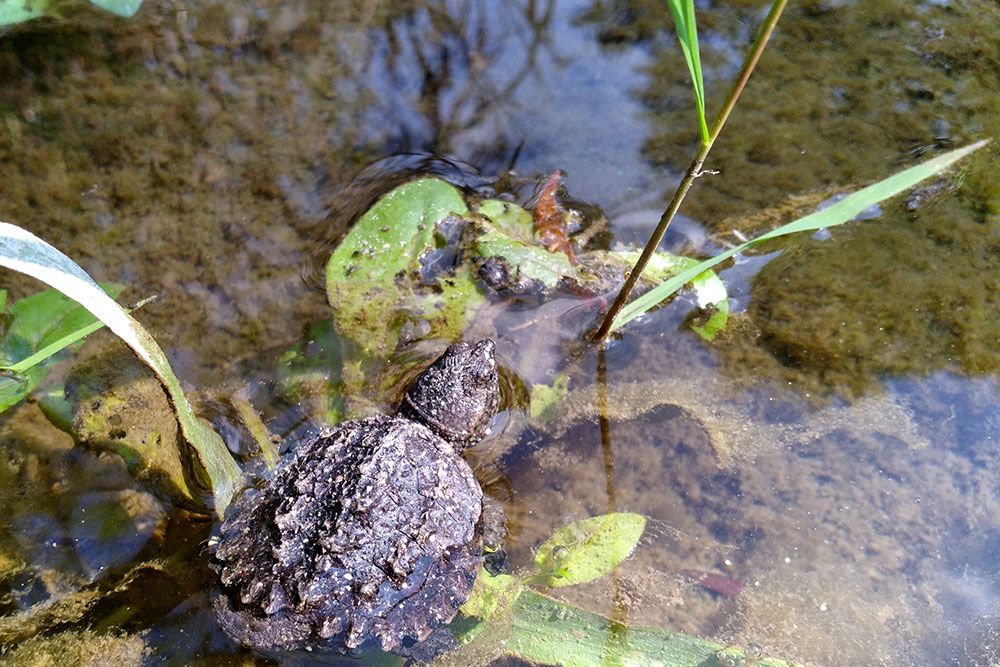Local Turtle Week Day Two - Threats to Turtles

Local Turtle Week – DAY TWO
Local Turtle Week posts for Saturday, August 28, 2021
Threats facing turtles
What could harm turtles with thick skin and hard shells?
We are often asked what threats turtles face and how they are at risk.
In this post we will discuss some of the main threats our local turtles face.
First, and one of the most important threats, is habitat loss and fragmentation.
Without wetlands and natural areas our local turtles have no home.
Without this habitat, they have no way of surviving in the altered landscape that now dominates southern Ontario.
Originally, southern Ontario was a mosaic of wetlands, forests, and natural meadows. Now only pockets of these natural habitats remain amongst the vast stretches of towns and villages; institutional, agricultural, industrial, and commercial land; and residential areas.
Watch for our upcoming #LocalTurtleWeek post specifically on wetlands!
To connect our new human-made landscape, humans also made dense networks of roads.
Roads and cars are one of the biggest threats to turtles. Unfortunately, turtles are also attracted to these roads as gravel shoulders present perfect conditions for nesting. There are many ways to help turtles against the threat of roads, such as:
- If you find a turtle crossing the road, help it cross in the direction it’s heading when it’s safe to do so.
Roadside nests are also perfect candidates for incubation.
Please contact Huron Stewardship Council at 519-524-8394, extension 3286 (or email staff@huronstewardship.ca) if you find a turtle nesting on a road.
If you find a turtle injured by a car, call the Ontario Turtle Conservation Centre to arrange a turtle taxi to save the turtle.
The last threat we will talk about is high meso-predator populations and nest predation (i.e., predators such as raccoons eating turtle eggs).
Our new human-made environment has increased populations of predators such as raccoons and foxes which dig up and eat turtle eggs.
Without nest protection with cages, many nests will be predated by raccoons and foxes that eat the turtle eggs.
Although this is natural, the frequency that it occurs is not.
Humans have created very large populations of raccoons.
If you want to help protect turtle nests from predators on your property you can make (or buy) nest cages to protect the nest.
You can also help reduce the raccoon population around your property by reducing access to human food by using locking garbage containers and compost bins.
Everyone can help turtles against the threats they face.
Humans have increased these threats.
We can, however, be part of the solution to reduce these threats.
Find out about how to restore and enhance wetlands on your property with the support of staff and financial incentives:
Plant trees:
Donate to tree planting through Carbon Footprints to Forests
Learn more:
For kids!
Learn about threats to turtles in this Turtle Guardians video: